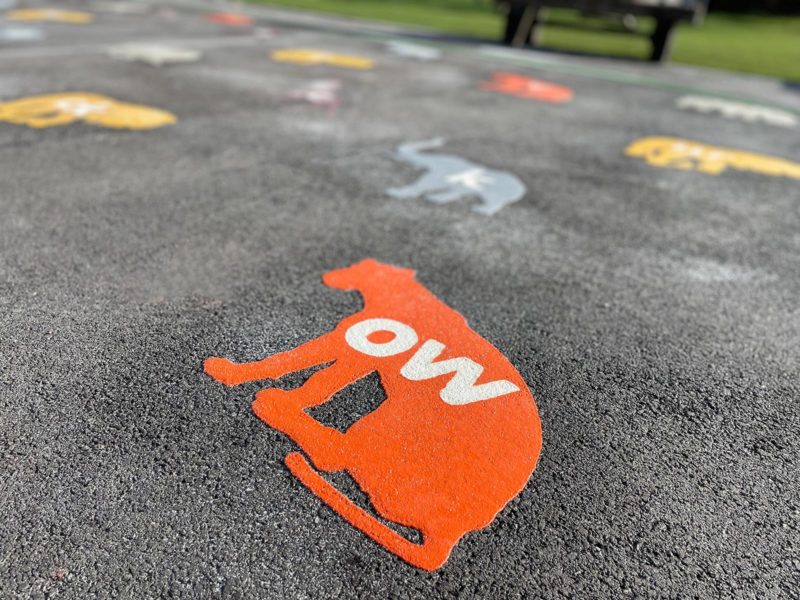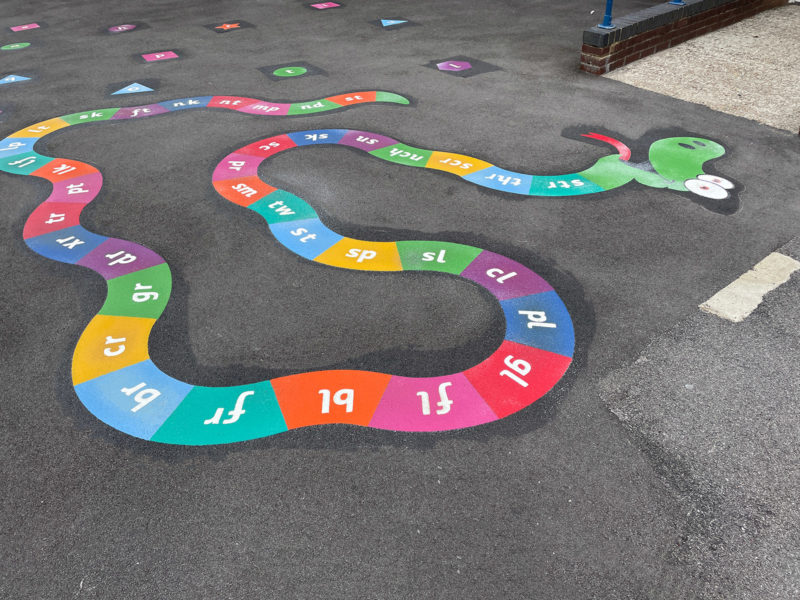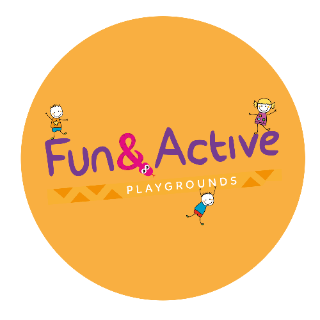Fun Phonics Activities Pupils Will Enjoy for EYFS, KS1 & KS2
Updated on: December 9, 2024
We know children learn best when they’re stimulated but coming up with fun phonics activities for early years and KS1 pupils every day is a big ask.
Luckily, we’re here to help!
From our phonics playground markings to this handy collection of fun phonics games and ideas, we’ve got plenty to help you spice up daily phonics lessons.
Our phonics playground markings for primary schools and early years settings are both fun and educational. They can be used for outdoor phonics activities as well as playtimes.
See phonics playground markings
Whether teaching KS1, EYFS or catch up in KS2, you’ll find our range of resources and ideas helpful.
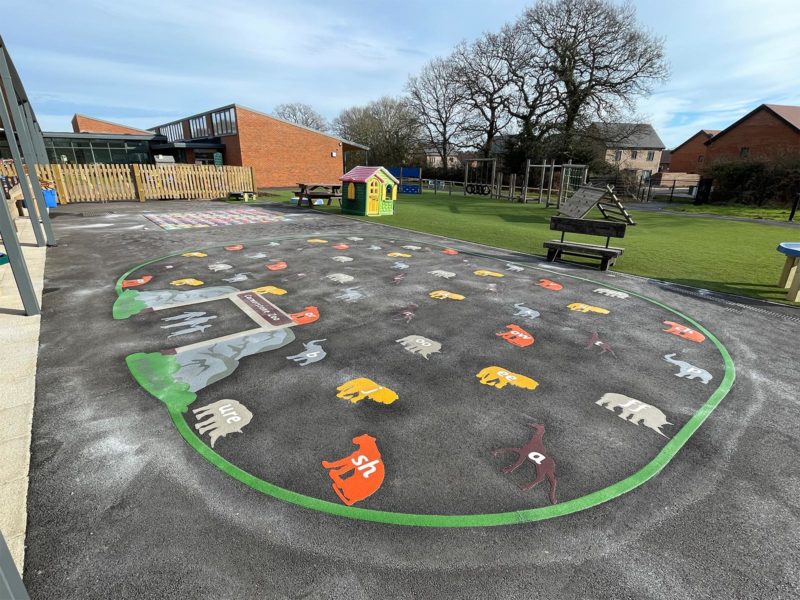
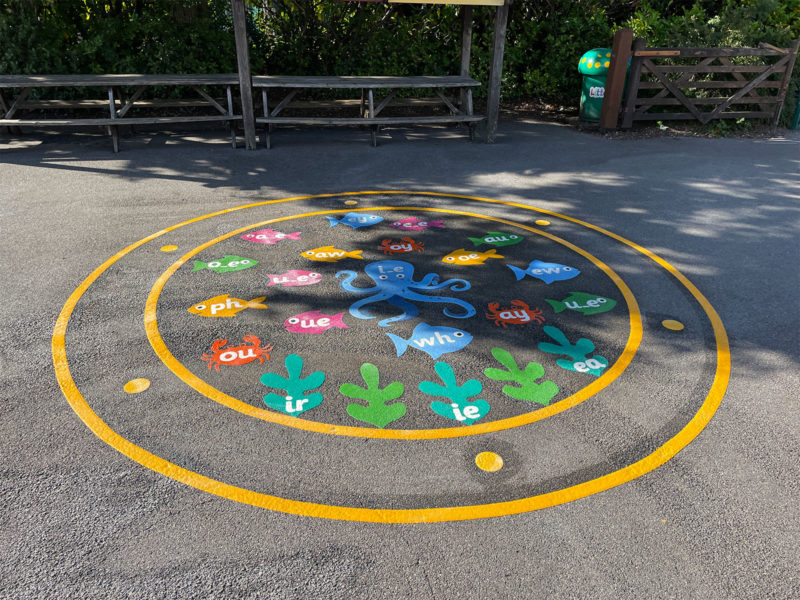
Why teach phonics so often?
Phonics is a structured approach to the teaching of reading by learning the sounds each letter (and groups of letters) make.
In his game-changing book, Why Johnny Can’t Read, Rudolf Flesch argues that humans across the globe have used ‘the simple process of memorising the sound of each letter in the alphabet’ since 1500 BC.
It was only part way through the twentieth century that phonics teaching was mistakenly abandoned.
The error was soon rectified in the late 1980s and phonics has had a prominent place in early years and primary education since.
According to the National Literacy Trust, 16.4% of adults in England have poor literacy skills which leave them ‘locked out of the job market’ and unable ‘to support their child’s learning’.
We know humans learn through regular practice, so a short phonics session is important for all children in early years and KS1.
Let’s take a look at some time-saving ideas for phonics sessions that are practical and easy to use with children in EYFS, KS1 or even KS2.
These are all outdoor phonics activities however you can easily play any of them indoors if you wish.

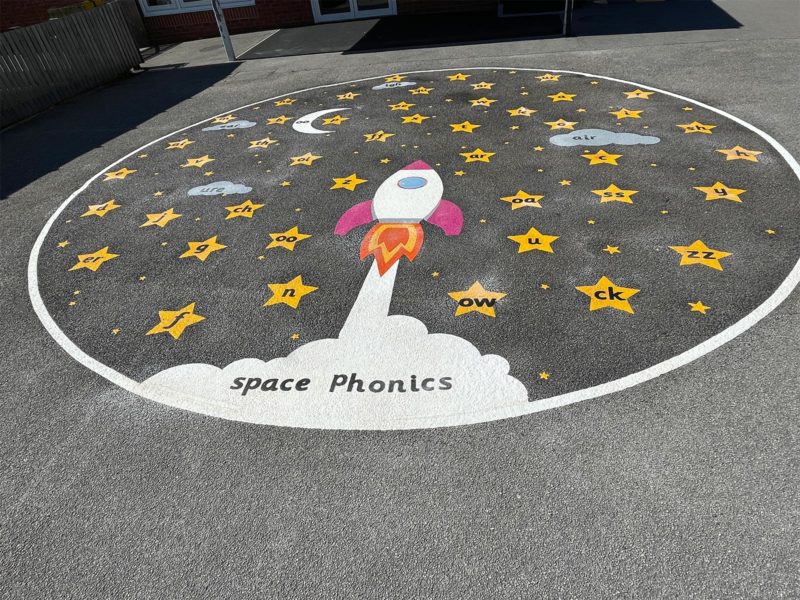
Fun Phonics Activities Pupils Will Enjoy for EYFS, KS1 & KS2
Jump:
- Set up words outside from the appropriate phase using letters. Letters should be big enough for children to see easily. Leave plenty of space between each word.
- Put children in pairs. Tell children they have 5 minutes to visit as many words as possible.
- When pupils arrive at each word, they have to jump through each letter together and sound out each sound as they go. Then they need to go back to the beginning and jump through the whole word by blending all the sounds together to say the word.
- If children can’t figure out the word together the first time, they can repeat both steps again. If they still can’t figure it out, they can ask a pair close to them to show them how they jumped through the word.
- Once they’ve successfully sounded out the word, children can write it down on their whiteboard, put a tick by it and move on to the next word.
Children should write any words they found difficult at the bottom of the whiteboard with a question mark next to it.
- Gather children together and ask them to show you their boards. Make a quick assessment. Pick pairs to demonstrate what they did. The rest of the children should repeat the blended word together each time.
Jump through a couple of words children found difficult yourself to address challenges and misconceptions.
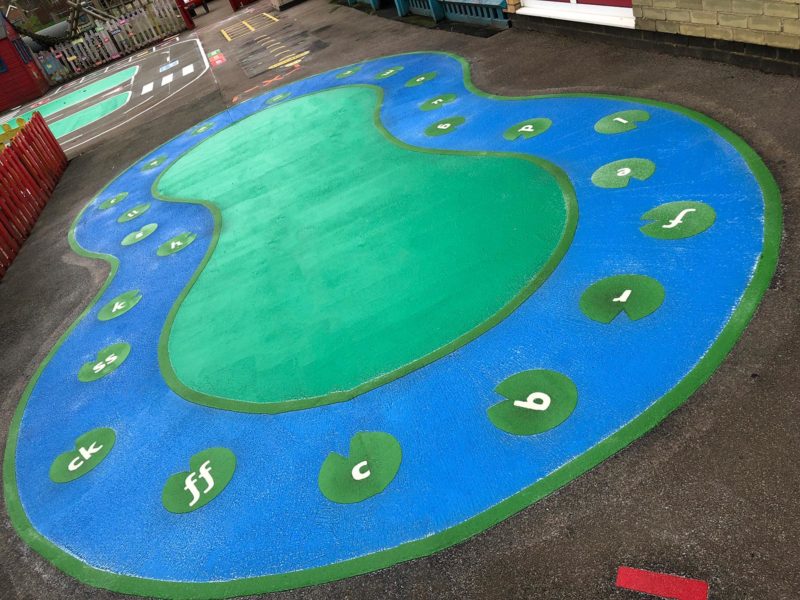
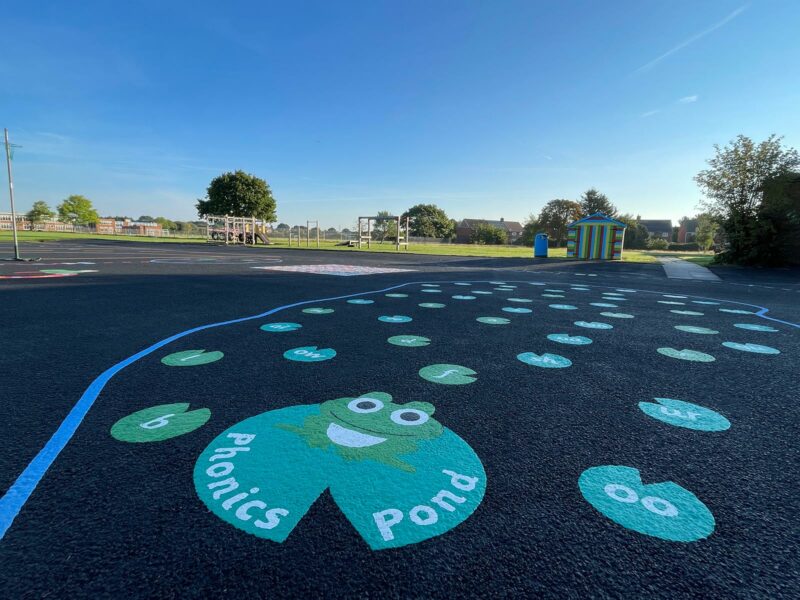
Memory:
- Stick phonemes from the appropriate phase or phases on a ball using paper or masking tape.
- Ask the children to stand in a circle.
- Tell children when they catch the ball, they have to say the sound then say a word which starts with the phoneme that’s pointing towards them. Throw the ball to a child and continue play for 1 minute.
- Move the game on. Tell children when they catch the ball, they have to say the sound then everyone has to say a word which starts with that phoneme when they catch the ball until you say switch.
On switch, throw the ball for a child to catch. Continue the game with a new phoneme.
- Move the game on after 3 minutes. Add another ball with vowels stuck on to it so there are now two balls. Place six whiteboards in the middle of the circle as well as some whiteboard pens.
Tell children only one ball gets thrown at a time.
- Throw the first ball around the circle four times and the second ball twice. Each child comes to the middle of the circle on each catch and writes the letter facing them on a whiteboard. There should only be one big letter on each whiteboard.
- Tell the children they have one minute to write as many words as they can using at least one of the words on the whiteboards. Share and repeat.
Freeze:
This phonics activity uses our phase 2 or phase 2 and 3 phonics playground markings.
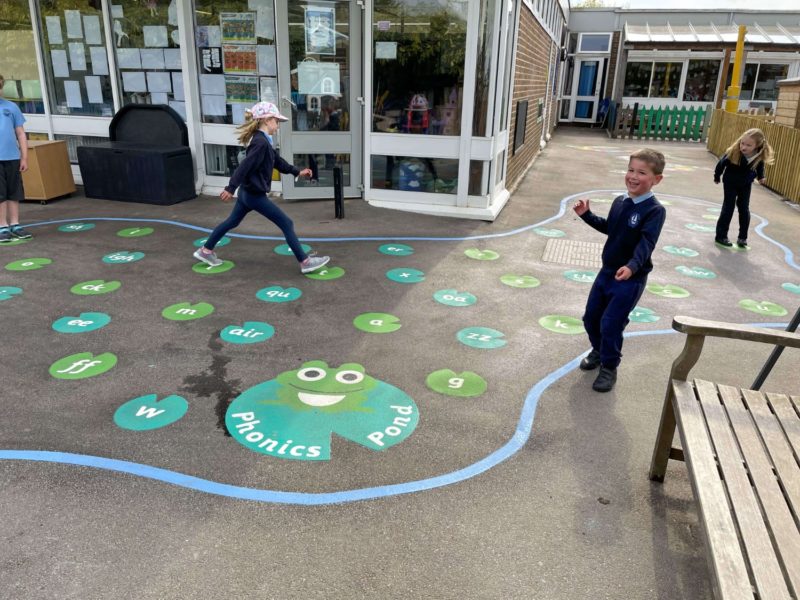
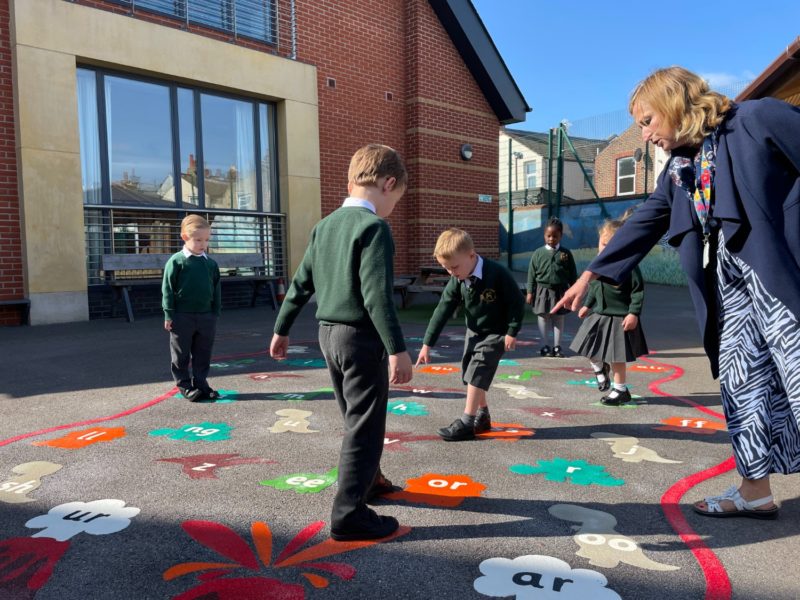
- Show children the area where they are playing. The area should be centred around the playground marking so children are moving across it.
- Tell children to jog or jump around the space. When you say freeze, they have to stop.
- Ask any children standing on a phoneme to call out the sound. Repeat.
- Place bean bags on either side of the marking.
- Tell children this time you will say a phoneme on freeze. When you do they have to get a beanbag and place it on the correct grapheme. Repeat 5-6 times.
- Tell children this round, when you say a word, they have to place a beanbag on the correct marking to match the first sound in the word. Repeat a few times.
- Ask everyone to stand around the circle. Put a beanbag on a phoneme then put another bean bag on a phoneme that’s a vowel. Sound out the first and second phonemes together.
- Ask if anyone could finish the word. Say it might be in their head or they may be able to see a letter or letters on the marking which could be used to finish the word.
Repeat together.
- Put children in pairs. Give each child a whiteboard. Challenge children to see if they can make any words using phonemes in the marking. Tell pupils they have 5 minutes. Give children a starting letter to kick things off.
- Pick pairs to feedback.
Hide and Seek:
- Place phonemes written on brightly coloured card around the outdoor space.
- Tell children they have 1 minute to find each phoneme.
- Put children in pairs. Say a phoneme. Children repeat it back to you. When you say go children have 1 minute to find the matching phoneme, bring it back and sit down.
- Repeat a few times.
- Now repeat for words.
Find more fun outdoor phonics activities for early years, KS1 and KS2 in our huge collection of educational playground markings.
Browse educational playground markings

Jess Sparks
Jess is deeply committed to supporting our mission of positively impacting UK outdoor play environments to promote healthy lifestyles in children.
With a CIM Level 6 Diploma in Sustainable Marketing, Jess channels her passion for sustainability into her marketing role, using her skills to promote eco-conscious practices and raise awareness for our initiatives.
Jess’ experience within the industry is instrumental in driving engagement and supporting connections with those who require ultra-durable, high-grade playground markings both locally and internationally.
